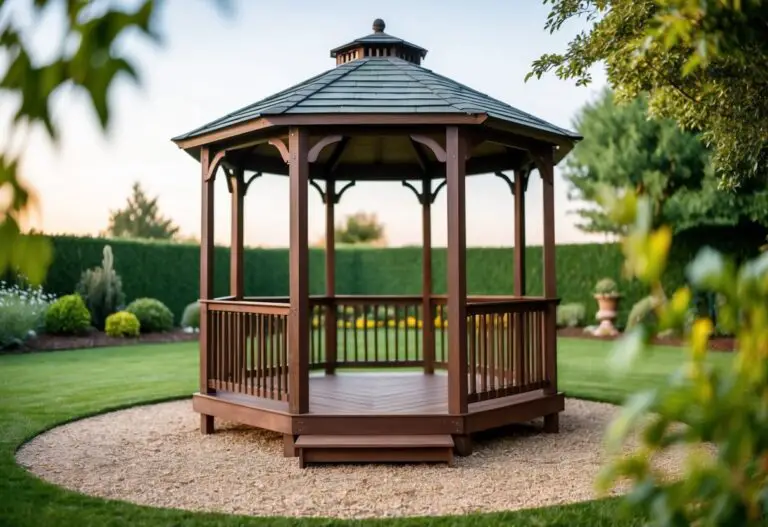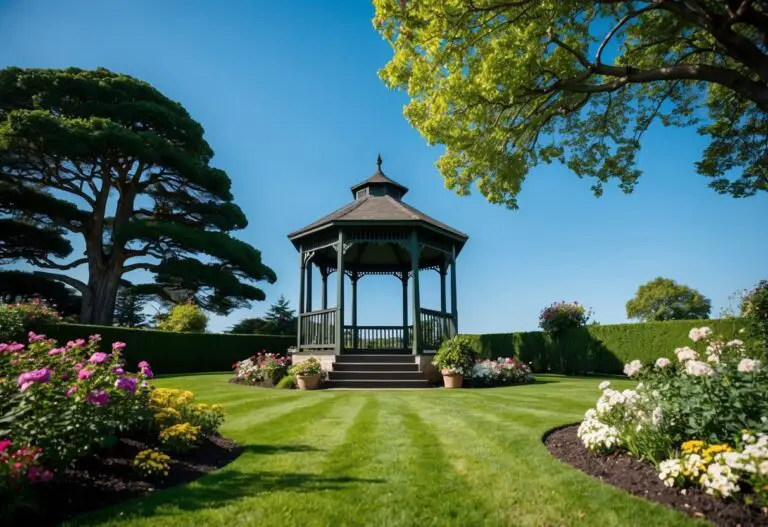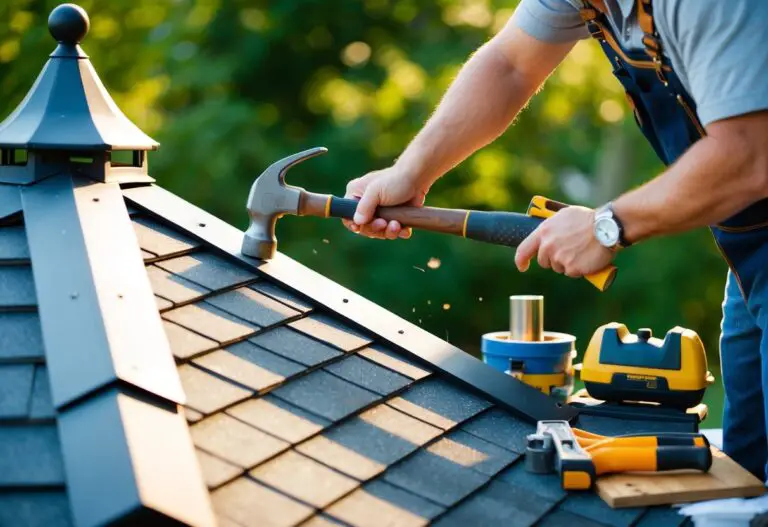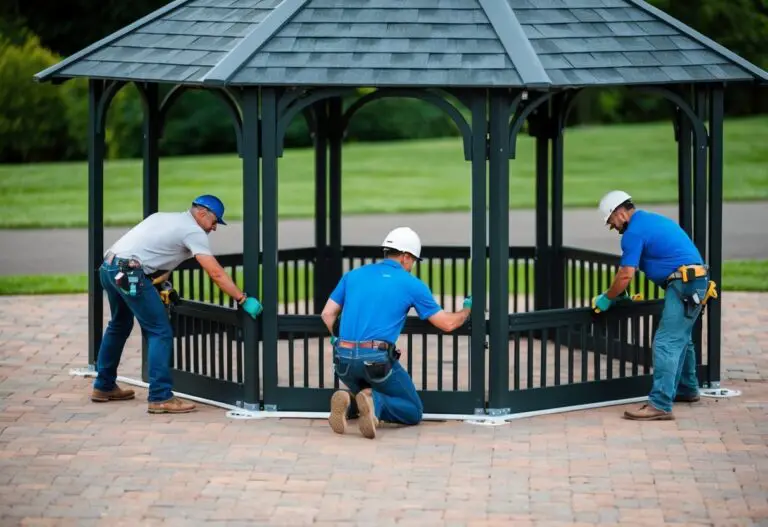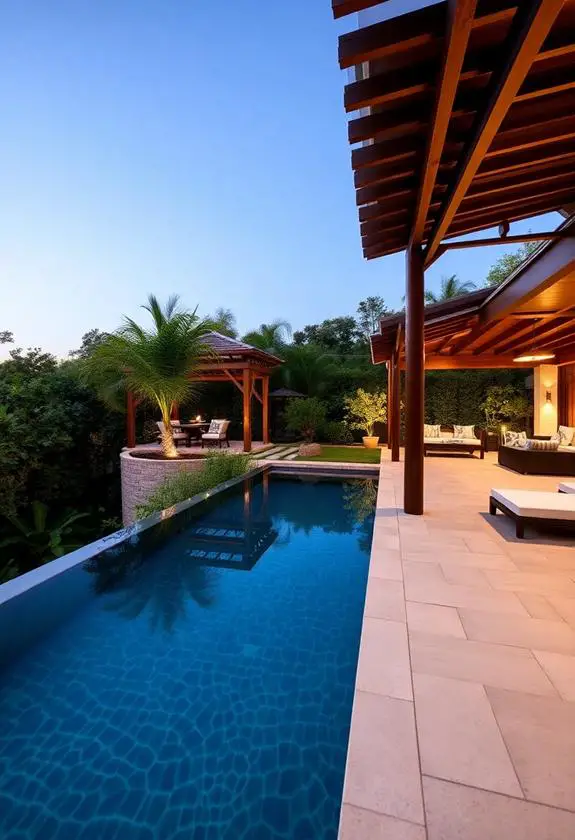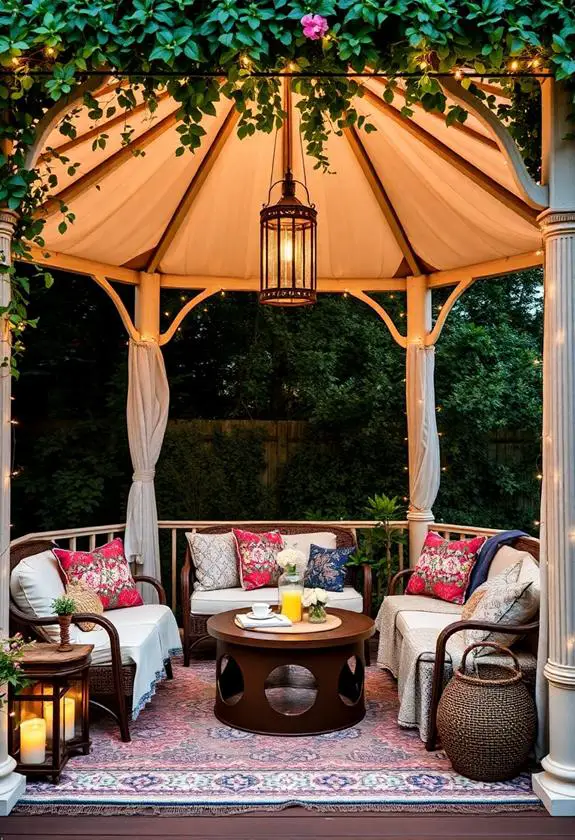Thinking about adding a gazebo to your backyard? You’re not alone. Many homeowners wonder if these charming structures are worth the investment. Gazebos can transform your outdoor space into a cozy retreat, perfect for relaxation or entertaining guests.

Gazebos are often worth the cost, providing a blend of beauty and functionality to your yard. They offer a shaded spot to enjoy the outdoors without pesky bugs, thanks to screening options. Plus, they can boost your property’s value and appeal.
The price of a gazebo varies based on size, materials, and features. While some may find the cost steep, many homeowners feel the benefits outweigh the expense. Your decision will depend on your budget, yard space, and how you plan to use it.
Key Takeaways
- Gazebos add both aesthetic appeal and functional outdoor living space
- Costs range from $400 for portable options to $10,000 for permanent structures
- Consider your budget, yard size, and intended use before investing in a gazebo
Benefits Of Gazebos
Gazebos can transform your outdoor space into a cozy retreat. You’ll love having a dedicated spot for relaxation and entertainment. These structures provide shade from the sun and shelter from rain, letting you enjoy the outdoors in comfort.
A gazebo adds charm to your yard. It creates a focal point that enhances the overall look of your property. You can choose from various styles to match your home’s architecture.
Privacy is another perk. Many gazebos come with curtains or mosquito netting. This lets you create a secluded area for quiet time or intimate gatherings.
Outdoor living becomes more enjoyable with a gazebo. You can set up seating, tables, or even a grill. It’s perfect for family meals, parties, or just unwinding after a long day.
Protection from the elements is a key benefit. Hardtop gazebos offer sturdy shelter year-round. Some even provide UV protection, keeping you safe from harmful sun rays.
Your property value may increase with a well-built gazebo. It’s an attractive feature for potential buyers if you ever decide to sell your home.
Gazebos are versatile. You can use them as:
- Reading nooks
- Yoga spaces
- Outdoor offices
- Dining areas
With so many uses, a gazebo can quickly become your favorite backyard feature.
Costs And Investment
Gazebos come in a range of prices to fit different budgets. A simple pop-up gazebo can cost as little as $100-$300. These are great if you want something portable and easy to transport.
For a more permanent structure, expect to pay more. Wooden gazebos typically run $2,000-$7,000, while vinyl options fall in a similar range. Brick gazebos are pricier at $2,000-$3,500.
Installation is another cost to consider. You can save money by assembling a prefab gazebo yourself. But for custom builds, professional installation may cost $500-$1,000 extra.
Don’t forget about long-term expenses. Wood gazebos need regular staining or sealing. Metal frames may rust over time. You’ll also want to budget for:
• Cleaning supplies
• Replacement parts
• Pest control
A gazebo is an investment in your outdoor living space. While the upfront cost can be high, many homeowners find the added enjoyment worth the price tag.
Think about how often you’ll use your gazebo. If you love entertaining outdoors, it could provide great value. But if you rarely spend time in your yard, a cheaper portable option might be better.
Factors To Consider
When thinking about getting a gazebo, you need to look at a few key things. First, think about why you want one. Is it for parties, relaxing, or just to make your yard look nice?
Next, look at where you’ll put it. Your backyard or garden should have enough space. Make sure it fits with other things like your deck or patio.
Size matters too. Gazebos come in many sizes. Pick one that works for your space and needs.
Think about style. There are lots of options:
- Wooden gazebos
- Vinyl gazebos
- Metal gazebos
Each has its own look and feel.
Don’t forget about rules. You might need permits to build. Check with your local office to be sure.
The foundation is important. It needs to be strong and level. This helps your gazebo last longer.
Roof material is another choice. Some options are:
- Shingles
- Metal
- Fabric
Your budget is a big factor. Gazebos can cost from $1,000 to $7,000 or more. Think about what you can spend and what you’re getting for your money.
Lastly, consider upkeep. Wood needs more care than vinyl. Make sure you’re ready for the work that comes with your choice.
Case Studies And Examples
You might wonder if gazebos really boost home values. Let’s look at some real-life examples. A house in California with a custom wooden gazebo sold for $15,000 more than similar homes in the area.
Homeowners love their gazebos too. Sarah from Texas says, “Our Alvantor octagon pop-up gazebo was the best purchase ever! It’s perfect for family gatherings.”
The market for outdoor spaces is hot right now. More buyers are looking for homes with ready-made outdoor living areas. This trend has increased demand for properties with gazebos.
Some of the best gazebos come with great warranties. For example, many top brands offer a five-year warranty. This gives you peace of mind about your investment.
Here’s what people often use their gazebos for:
- Summer barbecues
- Outdoor yoga sessions
- Reading nooks
- Romantic date nights
Remember, the right gazebo can make your backyard feel like a luxury resort. It’s a way to expand your living space and enjoy nature more often.
Pros And Cons
Gazebos can be a great addition to your yard, but they come with both benefits and drawbacks. Let’s look at some pros and cons to help you decide if a gazebo is right for you.
Pros:
• Adds value to your property
• Creates a beautiful focal point in your garden
• Provides a cozy spot for relaxation or entertaining
• Offers shelter from sun and light rain
• Can be customized to match your style
Sturdy gazebos with hard roofs and strong frames hold up well in high winds and harsh weather. This durability means you can enjoy your outdoor space year-round.
Cons:
• Upfront cost can be high ($2,000 to $9,900 on average)
• Requires regular maintenance like cleaning and repairs
• Takes up significant space in your yard
• Permanent structures may need permits
Fabric-top gazebos are more affordable but less weather-resistant. You’ll need to take them down in winter and replace the fabric every few years.
Before buying, think about how you’ll use the gazebo. Will you host parties? Need bug protection? Your needs will impact the style and features you choose.
Frequently Asked Questions
Gazebos can add value and function to your outdoor space. Here are some common questions about these structures and how they compare to other options like pergolas.
Can investing in a gazebo improve my home’s resale value?
Adding a gazebo can boost your home’s value. It creates an eye-catching focal point in your yard. Buyers often see gazebos as a bonus feature. They picture relaxing or entertaining in the space.
The exact value increase depends on the gazebo’s quality and your local market. A well-built gazebo that fits your home’s style will likely have the biggest impact.
What is the typical lifespan of a well-maintained gazebo?
With proper care, gazebos can last many years. Wood gazebos often last 20-30 years if sealed and maintained. Vinyl gazebos may last even longer, up to 50 years.
Metal gazebos can last 15-20 years or more. Their lifespan depends on the type of metal and how well it’s protected from rust.
Regular cleaning and upkeep are key to a long-lasting gazebo. Fixing small issues quickly helps prevent bigger problems down the road.
How does a gazebo compare to a pergola in terms of functionality?
Gazebos and pergolas both create outdoor living spaces, but they have some key differences. Gazebos are fully roofed structures that offer more shelter from sun and rain. They often have a floor and can be enclosed with screens.
Pergolas have an open roof made of beams or lattice. They provide partial shade and support for climbing plants. Pergolas are usually attached to a house or patio, while gazebos stand alone.
You can use both for relaxing or entertaining. Gazebos offer more protection from the elements. Pergolas blend more seamlessly with your landscape and can create a stunning plant-covered archway.
